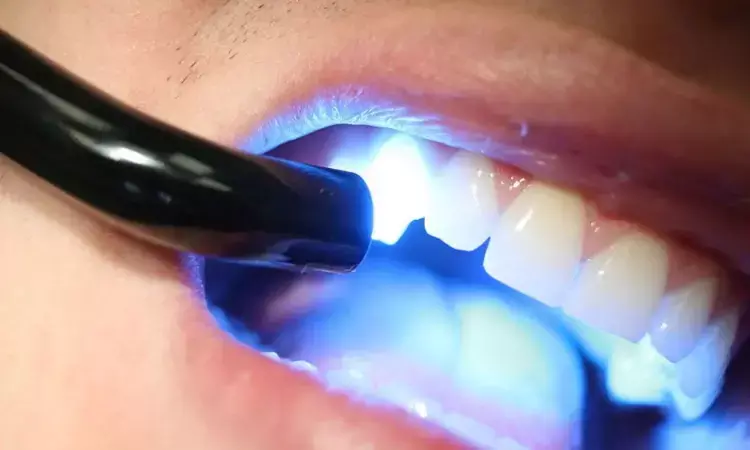- Home
- Medical news & Guidelines
- Anesthesiology
- Cardiology and CTVS
- Critical Care
- Dentistry
- Dermatology
- Diabetes and Endocrinology
- ENT
- Gastroenterology
- Medicine
- Nephrology
- Neurology
- Obstretics-Gynaecology
- Oncology
- Ophthalmology
- Orthopaedics
- Pediatrics-Neonatology
- Psychiatry
- Pulmonology
- Radiology
- Surgery
- Urology
- Laboratory Medicine
- Diet
- Nursing
- Paramedical
- Physiotherapy
- Health news
- Fact Check
- Bone Health Fact Check
- Brain Health Fact Check
- Cancer Related Fact Check
- Child Care Fact Check
- Dental and oral health fact check
- Diabetes and metabolic health fact check
- Diet and Nutrition Fact Check
- Eye and ENT Care Fact Check
- Fitness fact check
- Gut health fact check
- Heart health fact check
- Kidney health fact check
- Medical education fact check
- Men's health fact check
- Respiratory fact check
- Skin and hair care fact check
- Vaccine and Immunization fact check
- Women's health fact check
- AYUSH
- State News
- Andaman and Nicobar Islands
- Andhra Pradesh
- Arunachal Pradesh
- Assam
- Bihar
- Chandigarh
- Chattisgarh
- Dadra and Nagar Haveli
- Daman and Diu
- Delhi
- Goa
- Gujarat
- Haryana
- Himachal Pradesh
- Jammu & Kashmir
- Jharkhand
- Karnataka
- Kerala
- Ladakh
- Lakshadweep
- Madhya Pradesh
- Maharashtra
- Manipur
- Meghalaya
- Mizoram
- Nagaland
- Odisha
- Puducherry
- Punjab
- Rajasthan
- Sikkim
- Tamil Nadu
- Telangana
- Tripura
- Uttar Pradesh
- Uttrakhand
- West Bengal
- Medical Education
- Industry
Resin-based composites containing finer fillers best maintain glossiness after routine tooth brushing: Study

USA: A recent study published in the Journal of Esthetic and Restorative Dentistry has shed light on the isolated effect of filler particle size on surface properties of experimental resin composites before and after toothbrush abrasion.
The researchers showed a significant reduction in gloss of resin-based composites (RBCs) containing fillers with larger particle sizes. There was an increase in surface roughness after toothbrushing abrasion for all RBCs, except those containing the finest-sized fillers.
"The particle size of the filler is a crucial determinant of the gloss and surface roughness of RBCs, after polishing and toothbrushing," reported Mikihiro Kobayashi, Oregon Health & Science University, Portland, Oregon, USA, and colleagues.
The study was conducted to isolate the relationship between filler size and the surface properties of roughness and gloss before and after toothbrush abrasion for experimental resin-based composites containing uniform spherical fillers.
For this purpose, the researchers studied five experimental light-cured RBCs with different spherical filler sizes and three commercial RBCs. Using silicon carbide papers, forty specimens were polished. Gloss measurement was done after 0, 90, 180, and 360 min of simulated toothbrushing, and surface roughness was measured before and after 360 min of toothbrushing. The RBCs were compared using the two-way ANOVA/Tukey's multiple comparison tests, and the correlation between particle size and surface gloss or roughness was also determined.
The study led to the following findings:
- After polishing and toothbrushing, RBCs with smaller fillers exhibited significantly lower surface roughness and higher gloss, and RBCs with larger fillers exhibited lower gloss and higher surface roughness.
- There was a significant correlation between filler particle size and gloss and surface roughness, both before and after toothbrush abrasion.
"The gloss of resin-based composites is reduced by increased surface roughness caused by toothbrush abrasion," the researchers wrote. "Resin-based composites containing finer fillers best maintain glossiness after routine tooth brushing."
Reference:
Kobayashi, M., Koi, K., Wiskoski, S., Watanabe, H., Lewis, S., & Ferracane, J. L. (2023). Isolated effect of filler particle size on surface properties of experimental resin composites before and after toothbrush abrasion. Journal of Esthetic and Restorative Dentistry, 35(8), 1286-1292. https://doi.org/10.1111/jerd.13105
Dr Kamal Kant Kohli-MBBS, DTCD- a chest specialist with more than 30 years of practice and a flair for writing clinical articles, Dr Kamal Kant Kohli joined Medical Dialogues as a Chief Editor of Medical News. Besides writing articles, as an editor, he proofreads and verifies all the medical content published on Medical Dialogues including those coming from journals, studies,medical conferences,guidelines etc. Email: drkohli@medicaldialogues.in. Contact no. 011-43720751


